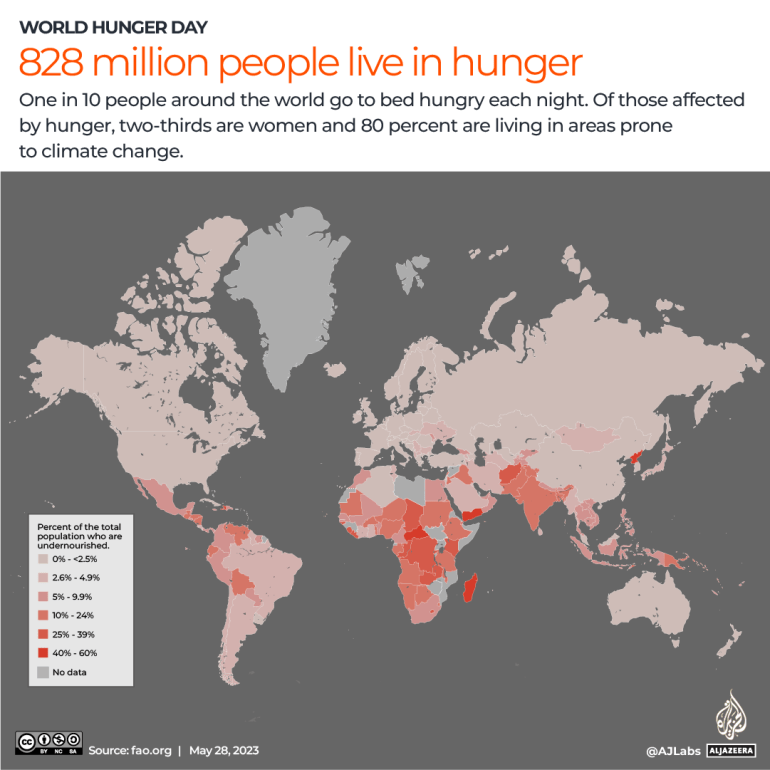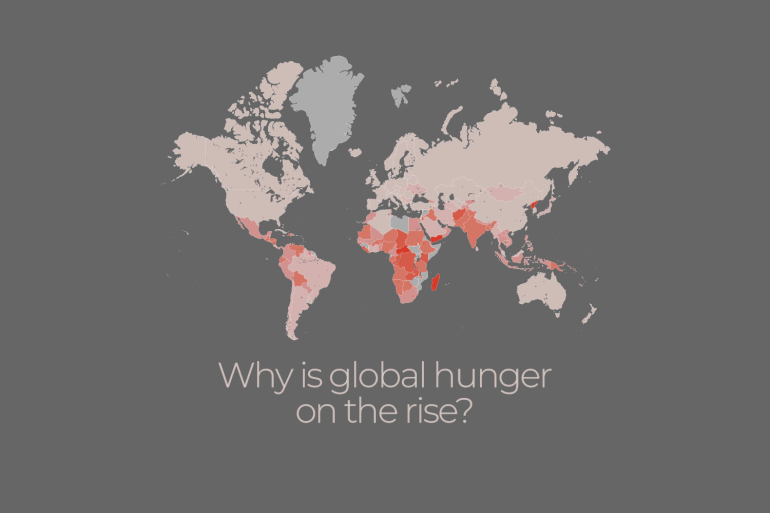Why do more than 800 million people live in hunger?
Ten percent of the world’s population does not have enough food, the highest number in more than a decade.
Hunger levels are rising around the world.
As many as 828 million people – or 10 percent of the world’s population – go to bed hungry each night, 46 million more than the previous year, according to the United Nations Food and Agriculture Organization (FAO).
Of those affected by hunger, two-thirds are women and 80 percent live in areas prone to climate change.
To raise awareness about global hunger levels, The Hunger Project, a non-profit, designated May 28 as World Hunger Day.

- Hunger is a debilitating state that occurs when the body is deprived of food for an extended period.
- Prolonged periods of hunger can lead to health problems and can cause lifelong physical and cognitive damage, particularly among children.
- Undernutrition extends beyond calorie intake to indicate deficiencies in energy and protein, as well as vital vitamins and minerals.
Following a decade of consistent decrease, global hunger has witnessed an upward trend in recent years. Between 2019 and 2021, the number of undernourished individuals increased by more than 150 million, primarily fueled by conflicts, climate change, economic shocks and the COVID-19 pandemic.



No comments:
Post a Comment